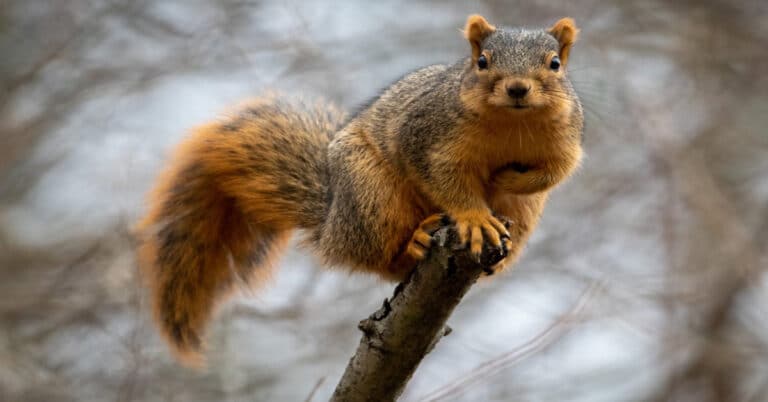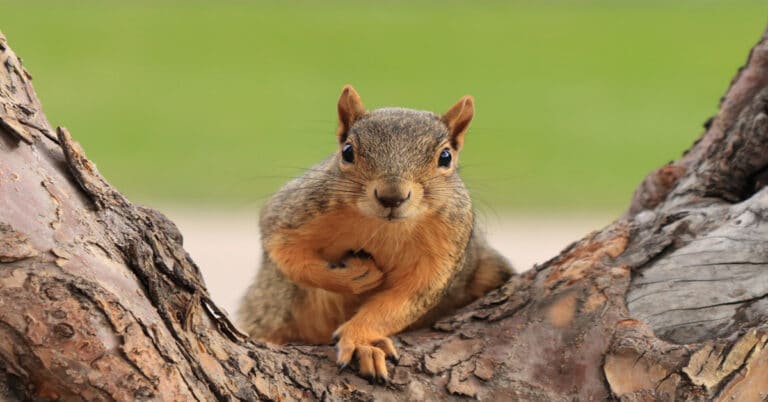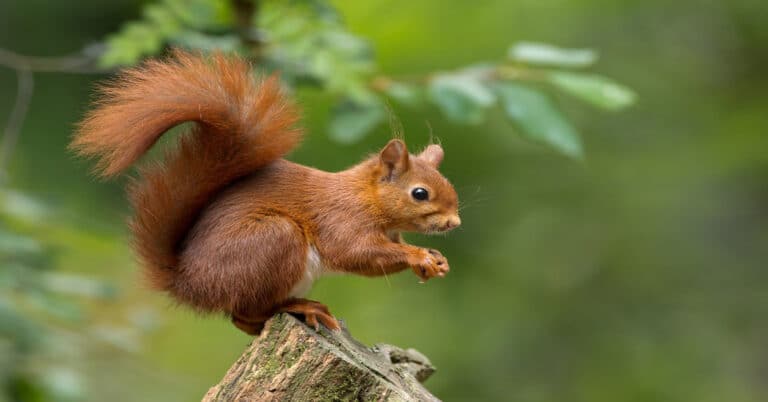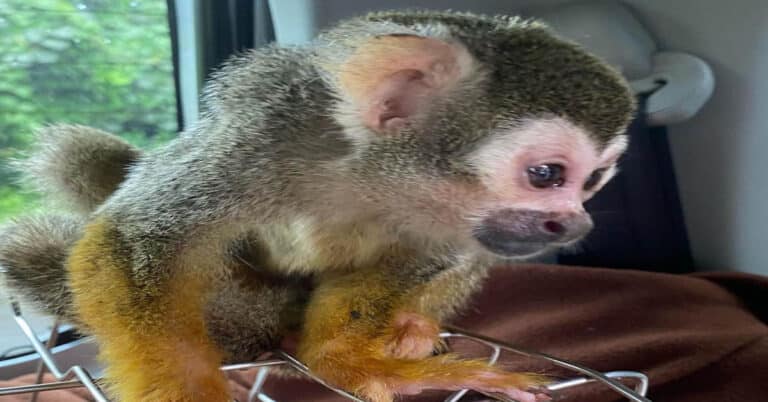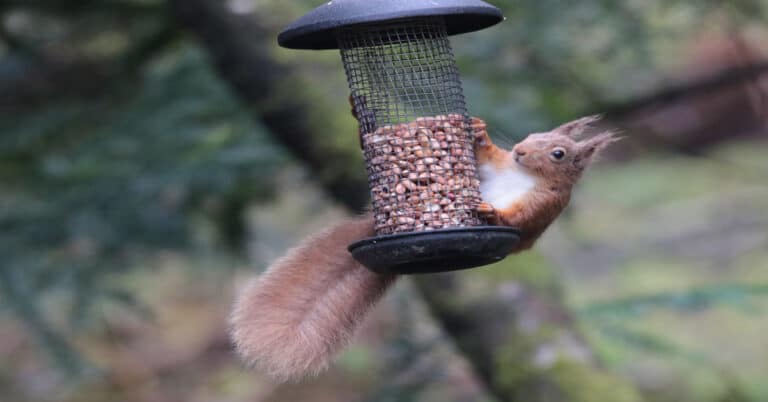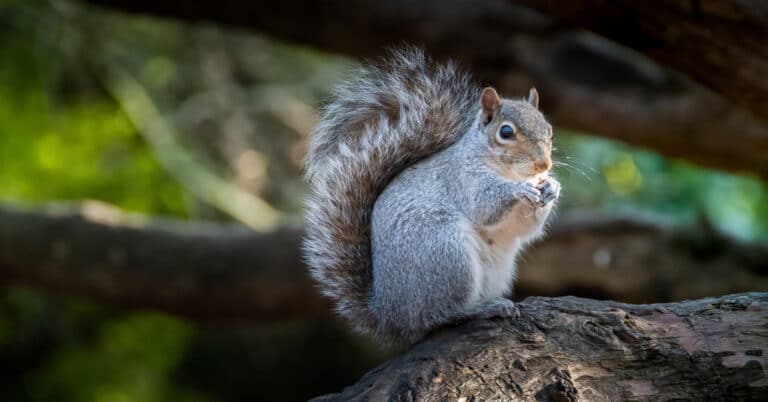Tree Squirrel – All About Cute And Snappy Mammals
We all love squirrels. They are small, cute animals with bushy tails and adorable, big eyes. Seeing them sitting on the tree, munching the nuts, is quite fun. Squirrels come in many different types, and the number of species is around 200.
Among them, some of the most widespread are in the tree squirrel group. This group has around 100 arboreal species, including the eastern gray squirrel, red squirrel, and fox squirrel. In this article, we will explore tree squirrel species, their habitat, and their characteristics.
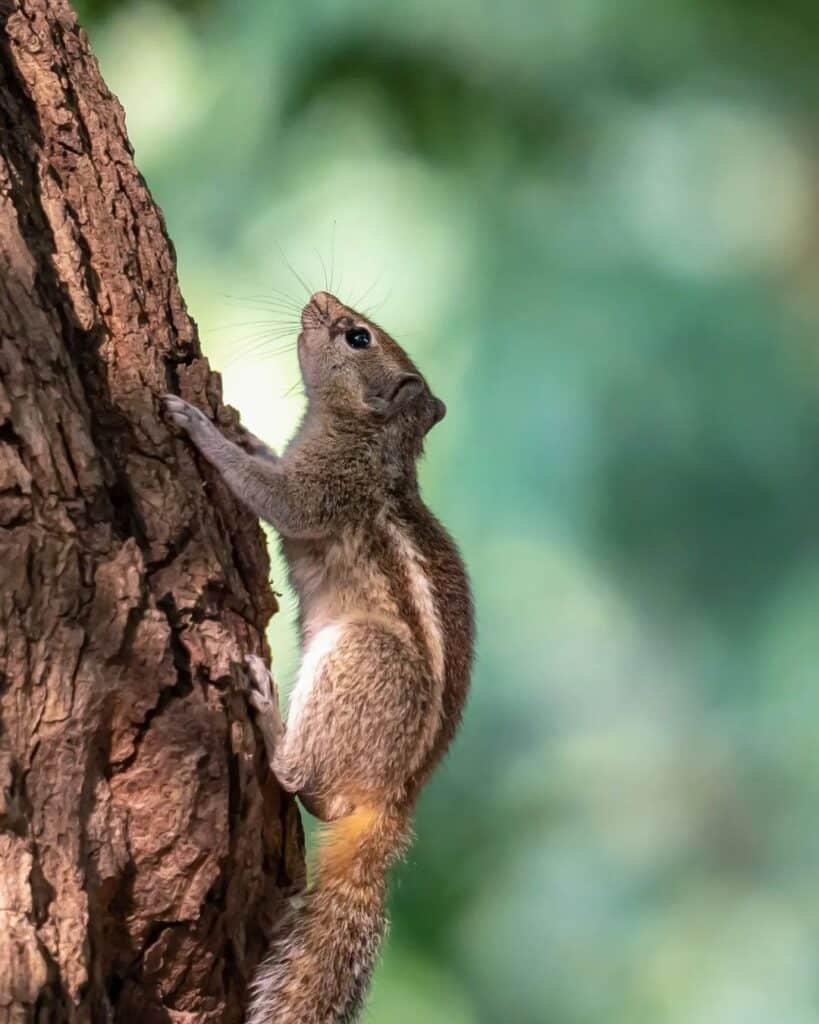
Briefly About Tree Squirrel
Tree squirrel is a group of squirrel species that spend most of their time in the trees. Other similar characteristics include habitat and psychological traits. The other groups also include chipmunks, marmots, ground squirrels, and flying squirrels.
Even though tree squirrels are typically found on the trees, other types, such as flying squirrels, are also found there. The difference is that the last ones have a slider wing, allowing them to fly.
Unlike flying squirrels, tree squirrels are mainly active during the daytime. Those animals use vocalizations and body language to communicate. The species possesses a wide range of vocalizations, including chatter, a raspy “mehr, mehr mehr,” a low-pitched noise, and a squeak resembling a mouse.
Tail-flicking and other motions, like facial expressions, are additional means of communication. Additionally, they let each other know that there are threats and predators in the area, and for this, they use various signals. Typically, tree squirrels utilize the “quaa” sound and flick their tail to express their emotions.
Reproduction & Mating
A tree squirrel starts mating and reproducing once they reach the age of one year. They breed in the middle of December or the beginning of January, and a tiny portion breeds once again in June. Only one breeding season may occur in a young squirrel’s first year. The pregnancy period typically ranges between 42 to 45 days.
Once the mating season starts, one or several males typically follow around the female; this time, they can be pretty loud. The tree squirrel typically has three babies in a litter. They are born with closed ears, no hair, and no sight. Infants weigh around 1/2 ounce when they are born and 3-4 ounces at 5 weeks. They weigh roughly half as much as adults when they are weaned.
They get weaned at the age of 10 to 12 weeks. After that, the young start to venture outside the nest. A colony of squirrels often loses 50% of its members each year. Squirrels older than four years old are uncommon in the wild, although they may survive up to ten years in captivity.
Where Does Tree Squirrel Live?
Squirrels favor hollow trees and structures because they prefer living in cavities. Large leafy nests are also built, called dreys. Squirrels use the dreys to give birth to their offspring and raise them there. Additionally, those structures are especially helpful when it is too cold or too hot outside.
A tree squirrel makes its nests in tree cavities, squirrel boxes constructed by humans, or leaf nests. Dreys are typically built with leaves, sticks, corn husks, and any other material that may be available for mother squirrels. Since cavities have a better juvenile survival rate than leaf nests, they are favored nesting locations.
It depends on the specific conditions. However, the season and the food supply typically determine the location of tree squirrels. The individuals can have an area of 1 to 100 acres covered. Depending on the availability of food, squirrels will wander throughout their territory. In the spring, they like the sensitive buds of maple trees, while in the fall they frequently seek out mast-bearing woodlands and cornfields.
In the quest for better habitat throughout the fall, squirrels may move up to 50 kilometers. Squirrel populations experience periodical fluctuations. Some tree squirrels have a strange habit. When the population grows rapidly, they start to leave the area and join the mass migration. Unfortunately, this is a difficult process for those little animals, and many of them do not survive it.
In some specific regions, an overlap between fox squirrels and gray squirrels can happen. Fox squirrels are frequently found in mature longleaf and pine forests in the southeastern United States. Whereas gray squirrels live everywhere, there are enough hardwoods to produce enough mast.
Fox squirrels are more frequently seen in agricultural woodlots in the Midwest, whereas gray squirrels prefer bigger forest blocks. In some situations, a particular species may choose bottomland forests over other upland habitats.
Gray squirrels are often observed in cities and other urban areas. There, they inhabit the parks and playgrounds. Both species frequently depend on mature hardwoods for their survival. Due to their preference for living in trees, similarly to tree squirrels, flying squirrels are only found in places with mature, massive hardwood trees.
Tree Squirrel Eating Habits
The methods squirrels use to store their food are very interesting and amazing. The term “scatter cache” refers to how large squirrels, including gray and fox squirrels, keep their food. Mostly, their main catch is the seeds and acorns, which are often kept in storage. Smaller squirrels, like red squirrels, keep their food in a single location. Red squirrels sometimes bring stacks of pine cones the size of garbage bags into attics or gutters.
Similar eating patterns exist between foxes and gray squirrels. They consume a wide variety of local fare and quickly adapt to strange food sources. Usually, in the late fall and early winter, they eat mast, the nuts and fruits of the wild trees.
Fall foods that those little animals like to eat include hickory nuts, acorns, Osage oranges, and walnuts. Pine cones are a major source of food for fox squirrels. In the spring, gray squirrels will also eat them. For later usage, nuts are frequently stored.
Tree buds are preferred by both species when the weather starts to warm up, and this typically happens in the late winter and early spring. They consume berries, fruits, and other succulent plant materials in the summer. When accessible, some tree squirrels consume fungi, grain, and cultivated fruits. Squirrels also chew bark from many trees.
The tree squirrel is not actually fully herbivorous. Even though the majority of their diet consists of plants and vegetation, they also consume insects, small frogs, eggs, and little birds.
Tree Squirrel As A Pests
Squirrels are occasionally viewed as pests because they can gnaw on various edible and inedible things and get into different areas. As their teeth continue to grow, this distinctive gnawing behavior also helps to keep their teeth sharp and avoid overgrowth. Squirrels will occasionally gnaw on metal and plastic in order to reach food.
Tree squirrels may bury food for later recovery. They dig many holes while searching for buried food using their excellent sense of smell. This can create problems for gardeners, especially those with a vegetable garden.
Sheds, attics, and basements need to be thoroughly sealed by homeowners in locations with a high squirrel population. This is the only option if they want to avoid having their property damaged by nesting squirrels. Otherwise, those little mammals can get into the attic and cause pretty serious damage.
When they enter structures, squirrels pose a significant fire risk. They frequently chew on the electrical wires while treating exposed power lines like tree branches. As a result, exposed conductors may short out and catch fire. Squirrel nests within structures cannot be safely disregarded for this reason alone. Additional issues brought on by a squirrel nest include noise, excrement, bad scents, and even structural damage.
Some homeowners turn to more creative solutions to this issue, such as getting pets such as cats or dogs or putting pet hair in the attic. This way, tree squirrels are more careful about where they enter. It is believed that this fur may alert nesting squirrels to a prospective predator’s presence and prompt them to flee. In general, odoriferous repellents like mothballs and ammonia are ineffectual at driving squirrels away from structures.
Threats To Tree Squirrels
Although the tree squirrel is pretty agile and fast, they can still become the victim of other predator animals. The eastern gray squirrel will be preyed upon by red foxes, bobcats, minks, weasels, and raptors. Despite being solitary animals, they will make warning sounds to let other squirrels know when a predator is around.
People also threaten the tree squirrel. There are fewer secure places for those small creatures to reside because houses and highways encroach on their habitat. Despite their high degree of adaptability, they are nonetheless susceptible to eradication, pets, and traffic.
Bottom Line
Tree squirrel is a small mammal that spends most of its time in the trees. However, those little creatures are adaptable and can live in various conditions, including the urban environment.
More than 100 species of squirrels make up this group of tree squirrels. Therefore, they are pretty widespread and can be found all around the world, except in Antarctica.

Nato is a content writer and researcher with a background in psychology who’s eager to explore the wonders of nature. As a travel enthusiast and animal lover, she hopes to inspire others to discover and cherish the beauty and importance of the natural world.


